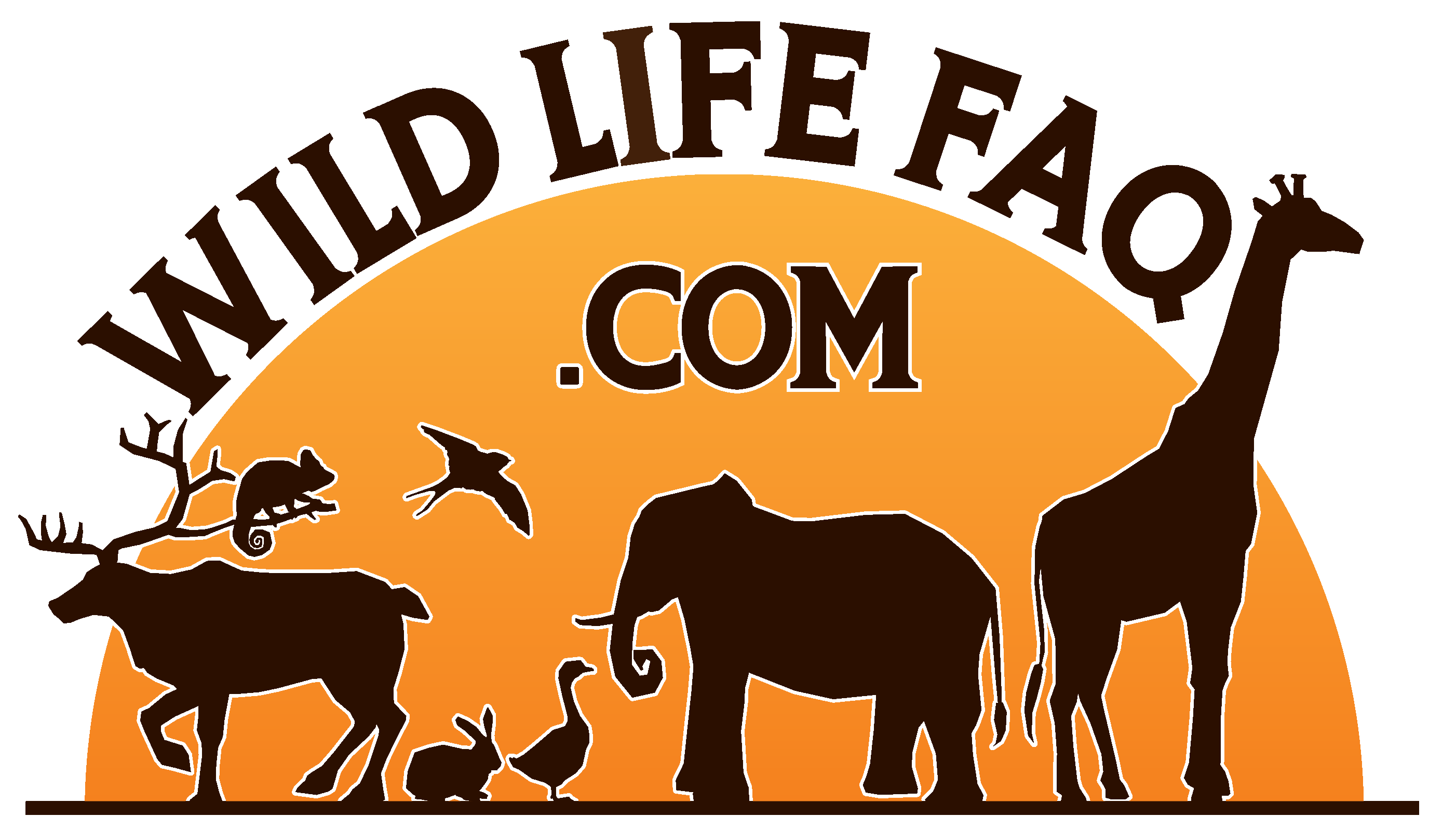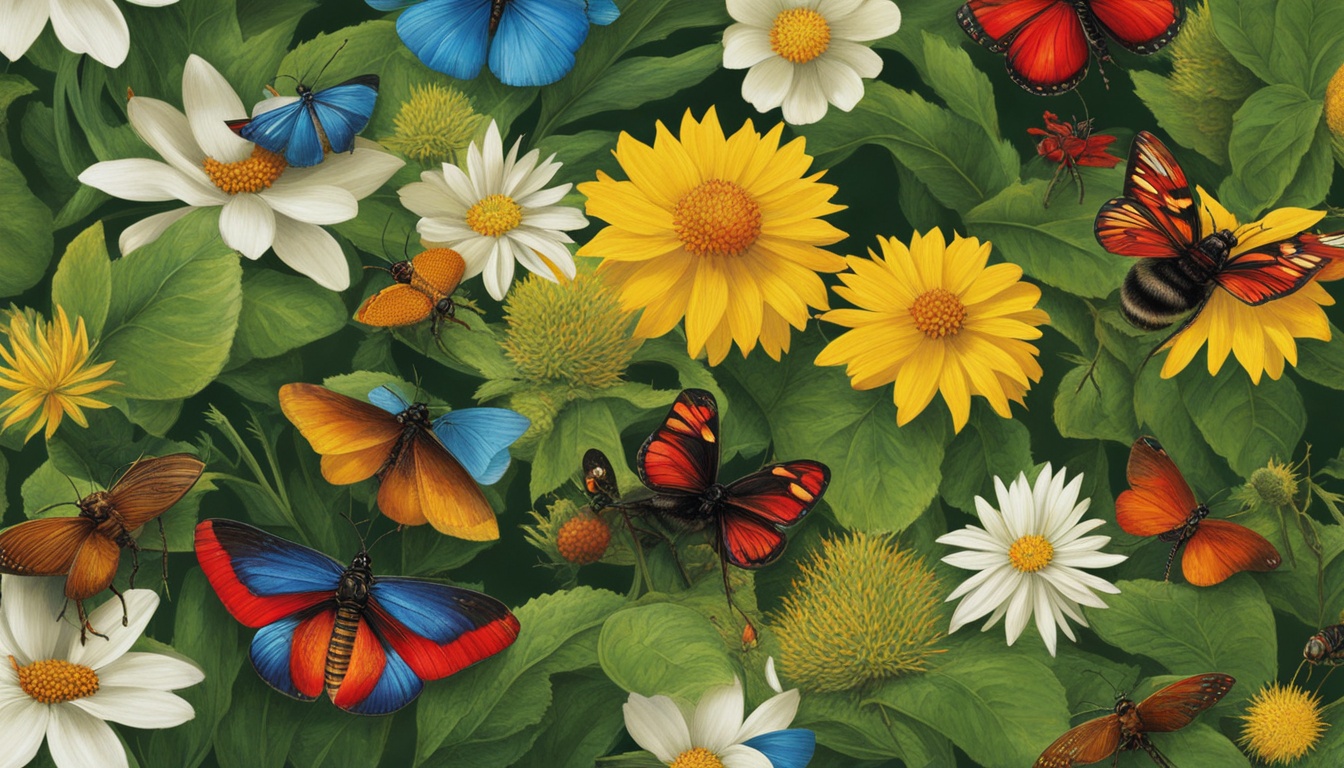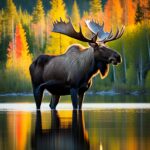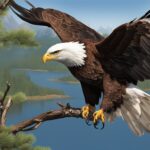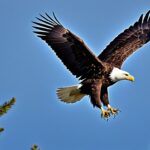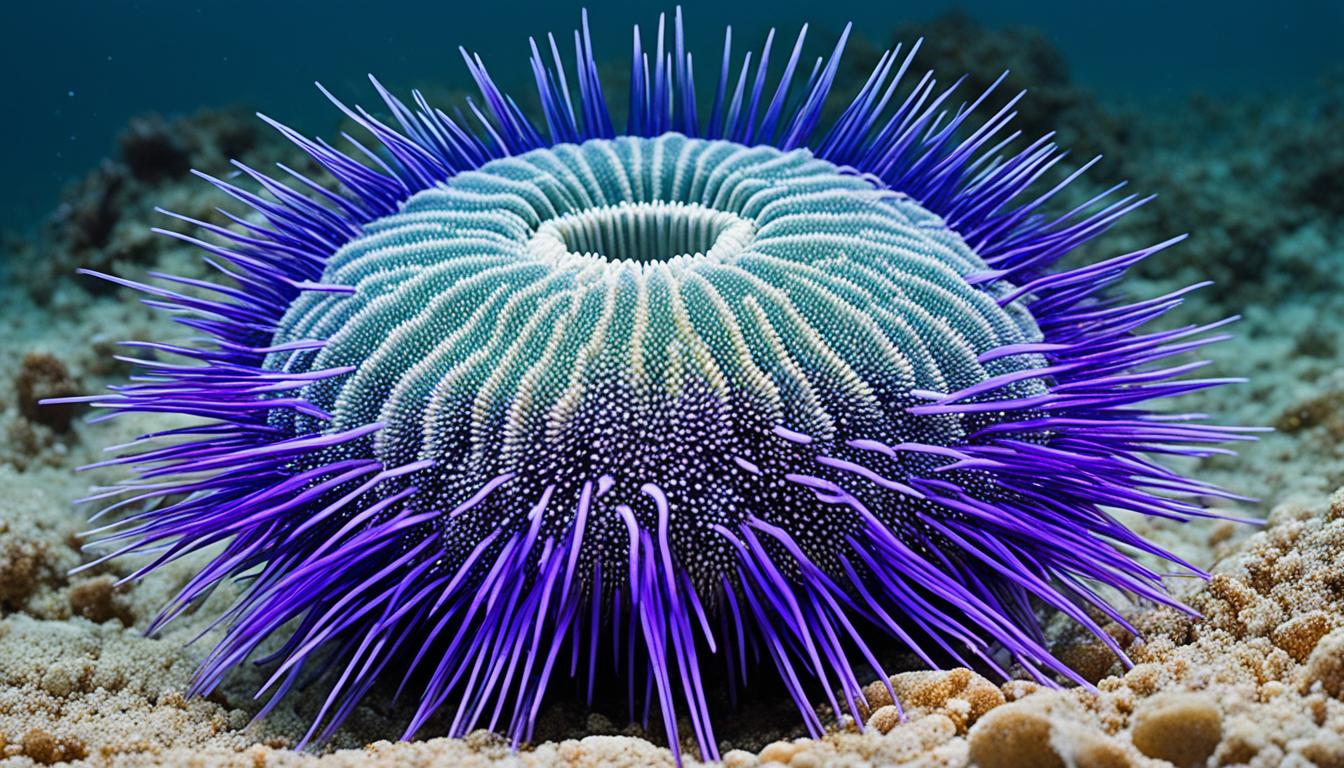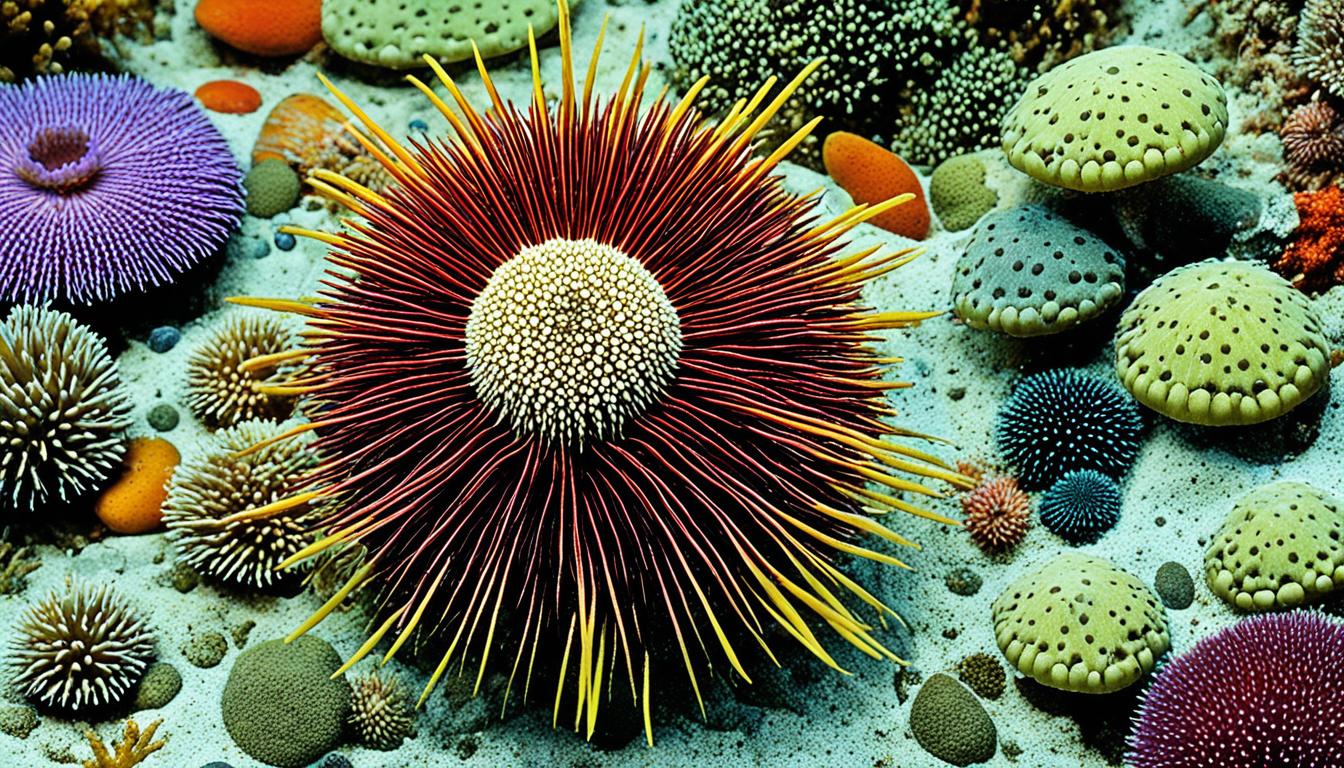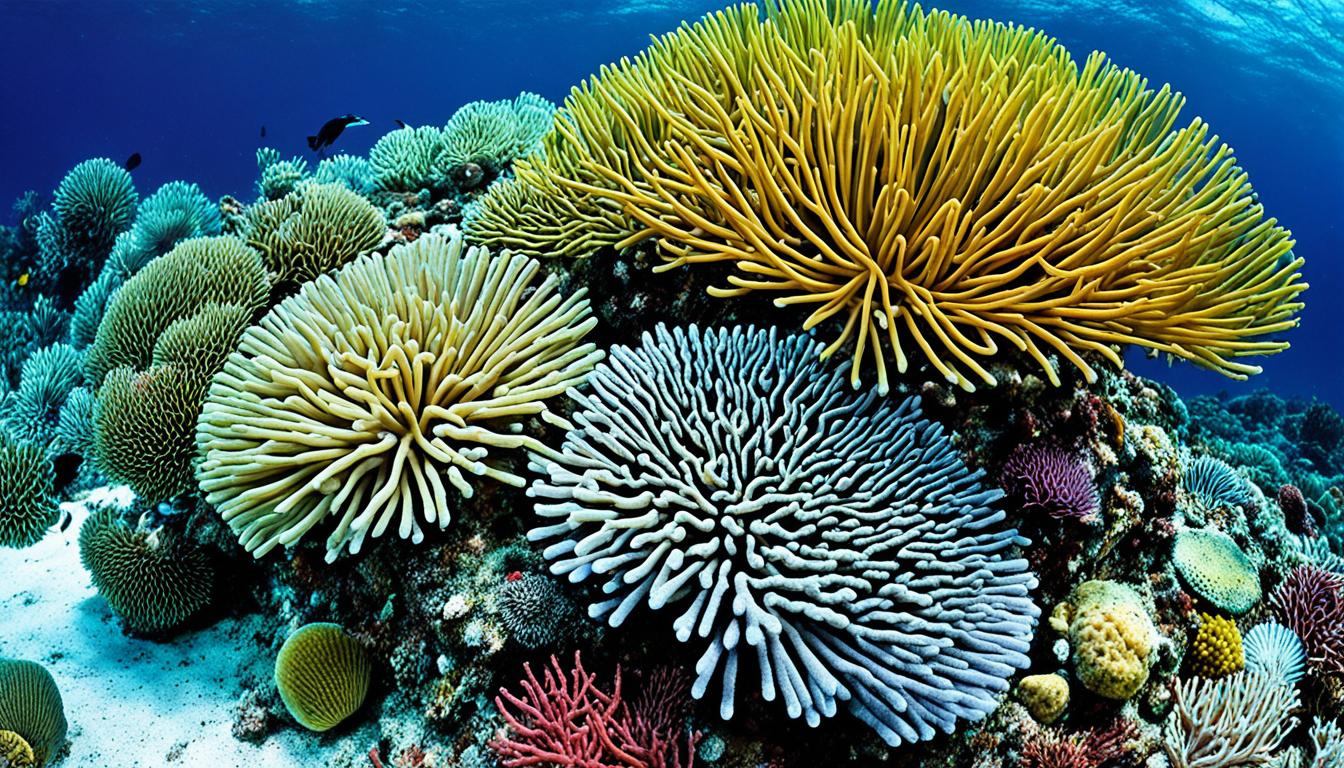Have you ever stopped to think about how many insects are in the United States? They range from tiny bees to insects that break down dead plants. These insects are really important. They help keep nature balanced and help our economy.
America is home to many unique insect species. Each one has a special job in nature. Even though they are just a small part of all the insects in the world, their role is big. They help keep nature in sync.
When you look at the main groups of insects in the U.S., you see how everything is connected. These insects not only survive but also thrive. They are a key part of the complex life cycle in America.
Introduction to Insect Biodiversity in the USA
Insect biodiversity is key to the health of the United States’ ecosystem. The USA insect biodiversity includes many species. These species are vital for ecological balance. They pollinate, decompose, and are food for other animals. Therefore, insects are critical for many natural processes.
Importance of Insects in Ecosystems
Insects, including many US native insect species, keep ecosystems working well. Bees and butterflies help plants reproduce through pollination. Beetles, ants, and flies break down dead materials. They put nutrients back into the soil. In addition to this, insects are an important food for birds, amphibians, and mammals.
Overview of Insect Population in the USA
The USA is home to about 91,000 known insect species. There are also an estimated 73,000 more species yet to discover. Insects in the USA include beetles, butterflies, flies, ants, bees, and wasps. This variety shows how insects are vital for different ecosystems.
Understanding the diverse insect population is crucial. It helps us see the role of these indigenous bugs USA in the environment. This awareness is key for future efforts to protect their habitats.
Beetles: The Dominant Insects of the USA
Beetles are the top insects in the United States, making up a big part of the animal world. They have many different kinds and are key in balancing the environment. You can find them in forests, deserts, and even in water. This shows their big role in keeping nature working.
Common Beetle Species
There are many types of beetles in North America, adding to its natural variety. Some common ones are:
- Long-horned Beetles (Cerambycidae): They’re known for their long feelers and babies that bore inside wood.
- Dung Beetles (Scarabaeidae): They roll dung into balls, which helps recycle nutrients.
- Rhinoceros Beetles (Dynastinae): These beetles have big projections that look like horns, showing their strength.
Role in Ecosystem
Beetles, among other insects, are vital for the US environment. They help in many ways:
- Many beetles help in breaking down dead things, keeping the soil healthy.
- They’re important food for other animals, making up the ecosystem’s base.
- Some beetles also pollinate plants, aiding in their reproduction.
Beetles, though from other places, fit well in North America. They show us how nature is diverse and can keep going despite changes.
| Species | Characteristic | Role |
|---|---|---|
| Long-horned Beetles | Long feelers | Help with wood break down |
| Dung Beetles | Roll dung | Help with nutrient reuse |
| Rhinoceros Beetles | Big horn-like parts | Improve the soil |
Butterflies and Moths: Bright and Nocturnal Flyers
In the lively world of Lepidoptera, butterflies and moths shine with unique features. They serve key roles in our ecosystems. Out of the 125,000 species worldwide, 12,000 are found in North America. This shows their essential place in nature.
Differences Between Butterflies and Moths
Butterflies fly in the daytime, showing off their beautiful, colorful wings. They remind us of the sunlight and flowers. Moths, on the other hand, are typically dull and fly at night. Their wings help them blend in with their surroundings. These contrasts show how diverse and well-adapted these creatures are.
Importance in Pollination
Butterflies and moths help plants reproduce by carrying pollen. Butterflies pollinate during the day, attracted by flowers’ colors. Moths do the same at night, ensuring night-blooming plants are also pollinated. Their work supports our natural and cultivated landscapes.
Beyond just being pollinators, the life stages of these insects also impact agriculture. Although their caterpillars sometimes eat crops, these insects become important pollinators as adults. This shows their dual role and importance in agriculture.
| Characteristic | Butterflies | Moths |
|---|---|---|
| Activity Period | Day | Night |
| Wing Appearance | Bright and Colorful | Drab and Camouflaged |
| Antennae | Club-shaped | Feathery or Filiform |
| Pollination Contribution | Daytime Pollination | Nocturnal Pollination |
| Caterpillar Impact on Agriculture | Detrimental Initially | Detrimental Initially |
Flies: Diverse and Ubiquitous Insects
The order Diptera, or flies, has over 16,000 species in North America. This makes them a big part of the USA’s insect world. Flies have one pair of wings, giving them strong flying skills. This helps them live in many different places.
Common Fly Species
The house fly (Musca domestica) and the fruit fly (Drosophila melanogaster) are well-known. They show interesting behaviors and adapt well to places rich in organic matter.
Ecological Roles of Flies
Flies have important jobs in nature. They help with pollination, break down waste, and control other insect populations. Their work maintains balance in nature, supporting plant life and influencing human life in positive ways.
Grasshoppers and Crickets: The Jumpers
Grasshoppers and crickets belong to the Orthoptera order. They have strong hind legs for jumping far. They also make unique sounds. You can find them all over the United States in different places.
Physical Characteristics
These insects have special traits. Grasshoppers jump in the day and have short feelers. They have strong bodies and legs. This helps them jump high. Crickets, however, come out at night and have long feelers. They are slender and also jump well.
Behavioral Attributes
Grasshoppers are active in the day. They make sounds by rubbing their wings. This sound is for finding love or marking their space. Crickets are more active at night. They chirp by rubbing their wings. This is how they talk to others and stay safe.
By learning about these insects, we see how they are essential in America’s nature. Their jumping and songs are key parts of their environment. They add to the insect types living here. This makes America’s natural world more varied and interesting.
True Bugs: Recognizing the Distinct Group
True bugs are a special group of insects known as Hemiptera. They are unique because of their mouthparts that let them pierce and suck. This group includes many insects we know, like stink bugs, assassin bugs, and bed bugs. In North America, there are about 5,000 species of true bugs. They have an important but sometimes negative impact on the environment.

Common Species of True Bugs
Some common true bugs include stink bugs and assassin bugs. Stink bugs use a bad smell as a defense. Assassin bugs feed on pest insects, making them helpful. Also, bed bugs are part of this group, feeding on human blood. The Hemiptera order is filled with a wide range of bugs, each with its own special job in nature.
Ecological Impact of True Bugs
True bugs have a big impact on North America’s environment. Stink bugs can be bad because they harm plants while feeding. But, assassin bugs are good since they eat pests. This shows true bugs’ importance in balancing nature. As part of the North American ecosystem, true bugs help in farming and maintaining nature’s balance.
Ants: Highly Organized Insect Societies
Ants are incredibly fascinating, showcasing a high level of organization. They live in complex colonies, with different species playing crucial roles. Ants are vital among the native bugs in the USA.
Common Ant Species in the USA
The USA has many common ant species, and each one is unique. Fire ants are known for their painful stings and large colonies. Carpenter ants dig into wood, causing damage.
Odorous house ants give off a smell when crushed. Pavement ants nest in cracks and pavements.
Roles in Ecosystems
Ants have several important jobs in ecosystems. They improve soil quality by aerating it, which helps plants grow. This makes the soil healthier for plants.
Ants also help spread seeds, which helps plants grow in different places. Some ants and plants work together in a way that benefits them both.
Additionally, ants are great at pest control. Some ants eat insects that can be harmful, keeping nature in balance. Ants break down dead plant and animal matter, which recycles nutrients.
Around the world, people eat ants because they are nutritious in some cultures. But at home, ants can be a problem. Keeping things clean, sealing openings, and using baits are ways to keep them under control.
Bees: Crucial Pollinators of North America
Bees are crucial to the ecosystem and farming in North America. They efficiently pollinate many plants, aiding their growth. This makes them vital pollinators.
In the United States, there are many bee species. There are solitary bees and those that live in groups. Their work helps the nation’s flowers bloom and its ecosystems thrive.
Types of Bees Found in the USA
In the USA, we have two main types of bees: solitary and social. Solitary bees work alone, like mason and leafcutter bees. On the other hand, bees such as honeybees and bumblebees live in groups. They have specific roles within their colonies.
Every bee colony has workers, drones, and a queen. They work together to keep the hive healthy and productive. These bees do more than just pollinate flowers. They help our crops grow, increasing our food supply.
Bees are important, but they can sting. Some people are allergic to these stings. It’s vital to balance their benefits with the need for caution when dealing with them. This way, we can live in harmony with these important creatures.
Wasps: The Predatory Insects
Wasps often get a bad rap for their stings. But, these insects are key in controlling pests. They are an important part of the ecosystem because they feed on other insects. Bees on the other hand, have a stronger body, and they depend on pollen.
Differences Between Wasps and Bees
Notable differences set wasps and bees apart. Wasps have a slender middle and a shiny body. In contrast, bees have a more solid build and are covered in hair. This helps bees gather food.
Bees eat plants, focusing on nectar and pollen. Wasps, however, are not picky. They eat insects or find food where they can, making them more flexible eaters.
“Wasps are predatory insects that make significant contributions to keeping other insect populations in check, thus maintaining ecological balance.”—National Geographic
Digging into these distinctions sheds light on wasps. As pest controllers, they are vital for managing harmful insects. This is crucial for plants and gardens, marking their role in the ecosystem.
| Characteristic | Wasps | Bees |
|---|---|---|
| Body Type | Slender, smooth | Robust, hairy |
| Diet | Omnivores (insects, nectar, etc.) | Vegetarians (nectar, pollen) |
| Role in Ecosystem | Pest control | Pollination |
Even though wasps can be scary, they are incredibly helpful. They play a big part in controlling pests. This makes them very important insects in the United States.
What kinds of insects are native to the USA?
The United States is rich in native insects, crucial for a balanced environment. Beetles, butterflies, and bees are just a part of this rich diversity. Their roles in pollination, cleaning up waste, and pest control are vital.
Beetles are found everywhere and show how well insects adapt. Butterflies and moths play a big part in pollinating plants, both in the wild and our farms. Even flies help by breaking down waste and providing food for other animals.
Recognizing these insects shows how every species is vital for our environment. Whether it’s ants helping the soil, bugs keeping pests in check, or bees spreading plant life, all have a role. Knowing and valuing them not only teaches us a lot but connects us to the world around us in meaningful ways.
